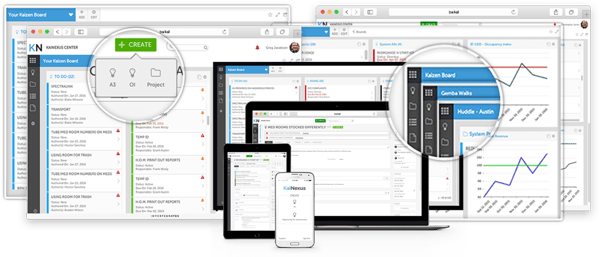 It is difficult to underestimate the potential to transform your organization through a dedicated effort to achieve continuous improvement. Of course, that’s much easier said than done, but with leadership and consistency, the possibilities are limitless.
It is difficult to underestimate the potential to transform your organization through a dedicated effort to achieve continuous improvement. Of course, that’s much easier said than done, but with leadership and consistency, the possibilities are limitless.
Whether you are just getting started with continuous improvement or need to get more out of an existing program, these six tips can help you get more people engaged, complete more projects, and demonstrate significant impact.
1. Focus on small incremental changes instead of significant disruptions
The first tip is to focus on small gradual changes instead of huge shifts in the process. Incremental changes can be made quickly every day and are typically inexpensive or even free. By focusing on little changes, you can remove barriers to improvement. This approach allows your team to reap the benefits of their “small wins” right off the bat. As many small changes are applied, your team will enjoy an accumulation of benefits from them, giving them the confidence to suggest more ideas.
2. Prioritize low-cost ideas
By going after improvements that do not require a large budget, you remove the financial barriers of your continuous improvement efforts. Taking the financial piece out of the picture helps empower front-line workers to suggest and implement ideas to improve their working process. They know that their suggestions do not require upper management approval. Ideas that fall into this category include eliminating unnecessary steps in a process, reorganizing the workspace, and documenting the Standard work.
3. Gather ideas from the process operators
In a continuous improvement organization, front-line employees are your greatest asset and the best source of new ideas for innovation. No one knows the process better than the person who performs it every day. No one has more ownership over the process than that person. The people best positioned to solve problems are those who are closest to them. Continuous improvement software makes collecting, managing, and measuring employee ideas seamless and efficient.

4. Empower employees for positive change
Although employees play a vital part in the daily improvement process, management’s responsibility is to empower and train them. Most workers are unfamiliar with continuous improvement principles and techniques like DMAIC, 5S, the eight wastes, value stream mapping, visual management, etc. Therefore, they may not realize that many of the challenges they face at work are due to imperfect processes that could easily be improved. Also, some employees are timid and reluctant to share ideas. It is leadership’s job to educate the team on improvement tools and techniques that can be applied to help their employees get through any personal or psychological challenge that stops them from trying out new ideas.
5. Provide regular feedback
A successful continuous improvement program needs consistent measurement and feedback. Before you can start, you must understand the baselines of your organization’s performance. Only by documenting and establishing a baseline can you determine if your improvement efforts have worked. The PDSA (Plan-Do-Study-Act) improvement cycle is a great way to implement small changes and get feedback quickly. It allows you to scientifically test ideas by measuring the difference between the baseline and the target condition. If the experiment worked, the next cycle starts with the new baseline as you move closer and closer to the target condition.
6. Measure the results
Measuring the impacts of your improvement efforts is the key to sustaining positive change. By showing an ROI for your projects, you can get more executive support and budget for improvement initiatives.
Some questions that might help when measuring the impacts of your improvements include:
- Did the change lower our costs?
- Did the change increase our revenues?
- Did the change reduce the amount of time required?
- Did the change improve employee or customer safety?
- Did the change improve employee satisfaction?
- Did the change improve product quality?
- Did the change impact sustainability?
Keep in mind that not all change can be measured quantitatively with an ROI. However, there are always qualitative ways to measure the impact of the improvement on the organization. By capturing both quantitative and qualitative results of your improvements, you will increase employee morale, show your workers the effect they are making, and recognize top performers.
Achieving continuous improvement requires participation from everyone in the organization. Leaders need to invest time and money in employee training and empowerment. Managers need to develop an environment of trust, collaboration, frequent communication, and a willingness to take a calculated risk. And of course, team members need to be engaged in their work and be challenged to develop small incremental improvements each and every day. By applying these ideas, your organization will start and sustain your continuous improvement efforts and become a more competitive organization with more efficient work processes and satisfied employees.




Add a Comment